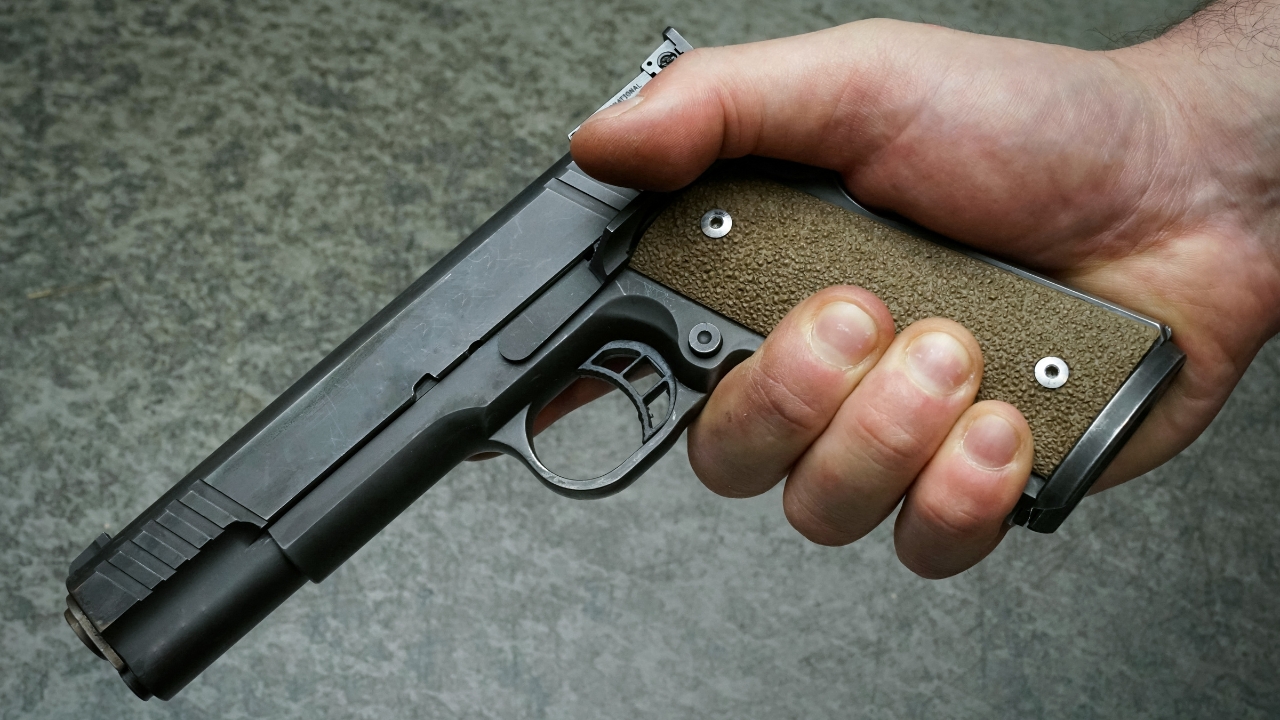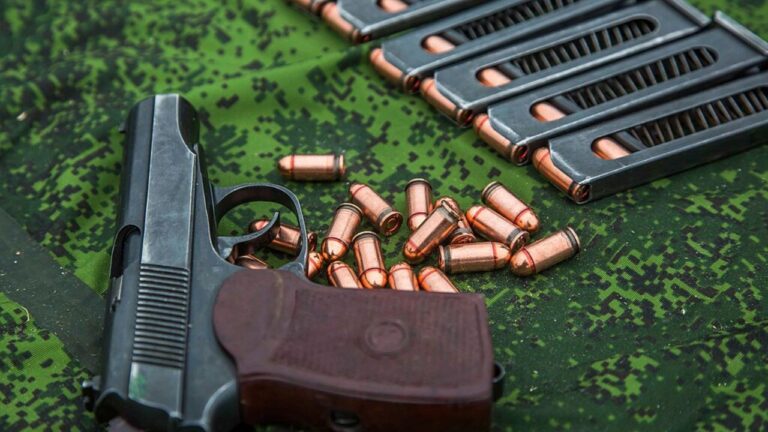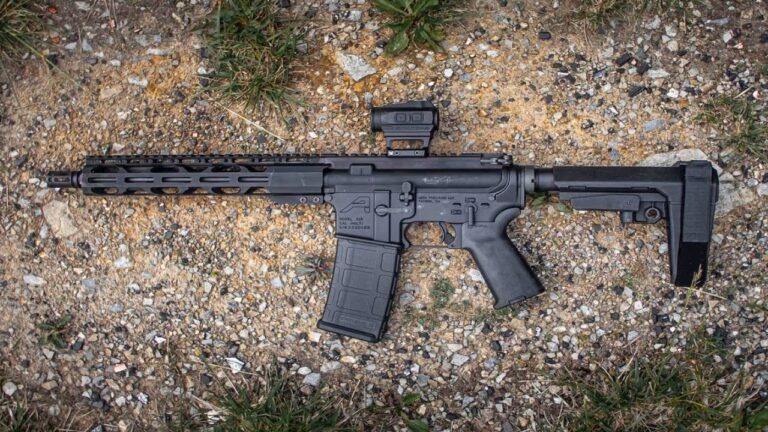Straight-Back Trigger Motion

Unlike most handguns that pivot on a hinge, the 1911’s trigger moves straight back. That linear motion gives a more direct feel and helps keep your sights steady during the press.
It also makes the trigger feel more consistent and natural—especially for shooters who are used to double-action triggers that stack or roll through.
Minimal Take-Up

Most 1911 triggers have very little slack before the wall. That short, crisp break is one of the reasons so many people rave about how they shoot.
With less movement before the shot, there’s less chance for you to throw it off target. Once you feel the wall, you know the shot is coming right behind it.
Clean Break

The break on a good 1911 trigger is sharp and predictable. There’s not much creep or sponginess—it just snaps clean when you apply the right pressure.
That kind of feedback makes it easier to build muscle memory and place accurate shots. It’s one of the first things people notice when they shoot one for the first time.
Light Trigger Pull

Most 1911s come from the factory with a lighter trigger than your average striker-fired pistol. A good one usually breaks around 4 to 5 pounds, and custom jobs can go even lighter.
That makes follow-up shots faster and less effort to control. For range or competition shooting, that lighter pull really helps tighten up groups.
Short Reset

One big reason the 1911 shines in rapid fire is the short, tactile reset. You don’t have to let the trigger go far at all to be ready for the next shot.
You feel and hear the reset click, and you’re immediately back in the fight. That reset speed is part of what gives the 1911 its smooth shooting rhythm.
All-Steel Components

Many factory triggers today use polymer parts, but most 1911 triggers are all metal. That extra heft and tight tolerances give it a solid, positive feel.
Steel-on-steel contact adds to the smoothness and durability. It just feels more mechanical in the best way—like it’s made to run and not wear out after a few thousand rounds.
Tunability

The 1911 platform is one of the most customizable out there. That includes the trigger. You can adjust pre-travel, over-travel, and reset with the right parts and know-how.
It’s easy to fine-tune the trigger exactly how you want it. That level of control isn’t common with many modern handguns unless you go into aftermarket upgrades.
No Double-Action Transition

With a 1911, every shot has the same feel. There’s no double-to-single transition like you get on a DA/SA pistol. That consistency helps shooters stay confident under pressure.
Knowing exactly what each trigger pull will feel like—first shot to last—makes it easier to stay accurate and focused, especially in dynamic scenarios.
Trigger Fit and Frame Geometry

Trigger fit matters more than people think. The 1911’s frame and grip angle help place your finger in a natural position, which makes trigger control feel easier.
Combine that with a wide trigger shoe, and you get better leverage and feel across your finger pad. That comfort translates to better control and cleaner presses.
It Was Designed That Way

John Browning didn’t stumble into a great trigger—it was part of the plan. The 1911 was designed with competition and combat in mind, and the trigger was a key piece of that puzzle.
It wasn’t just about durability—it was about shootability. Over 100 years later, it still holds up as one of the best-feeling triggers in the game.
*This article was developed with AI-powered tools and has been carefully reviewed by our editors.






